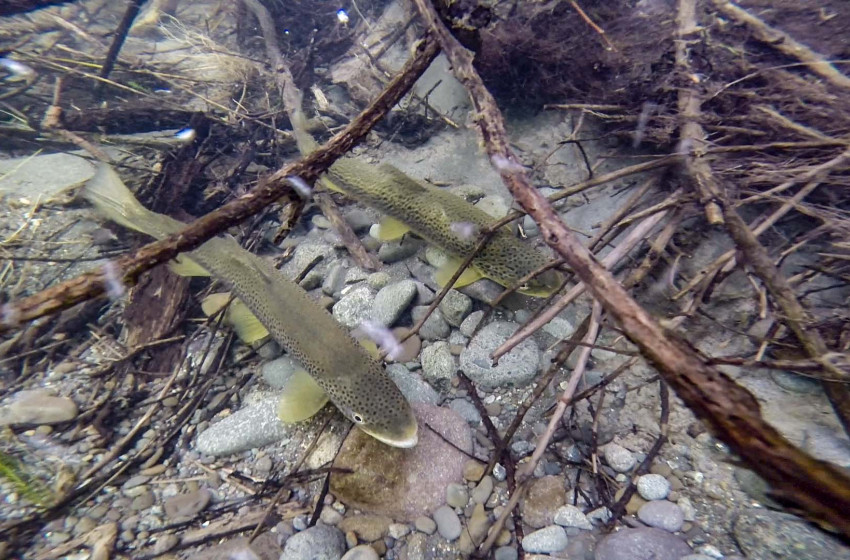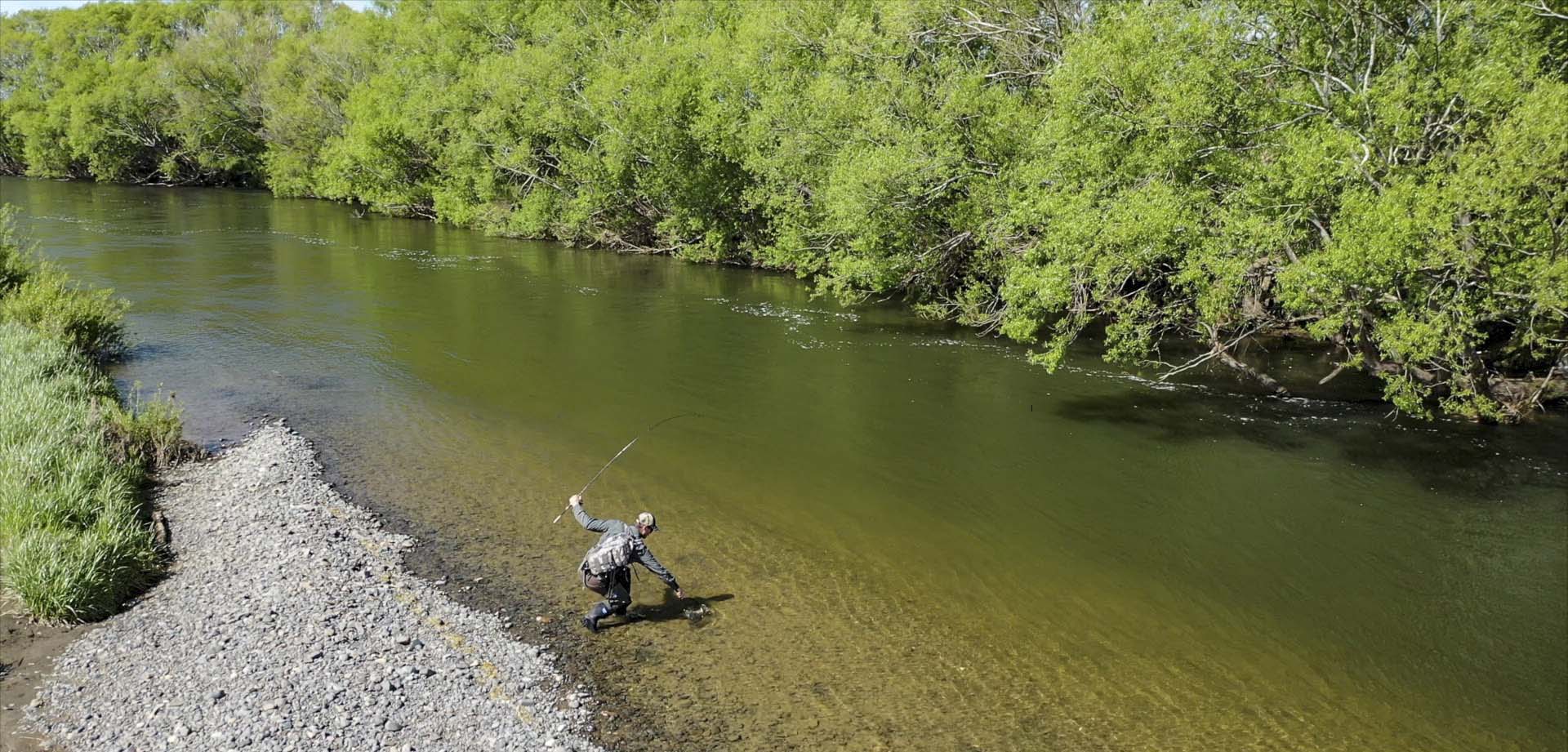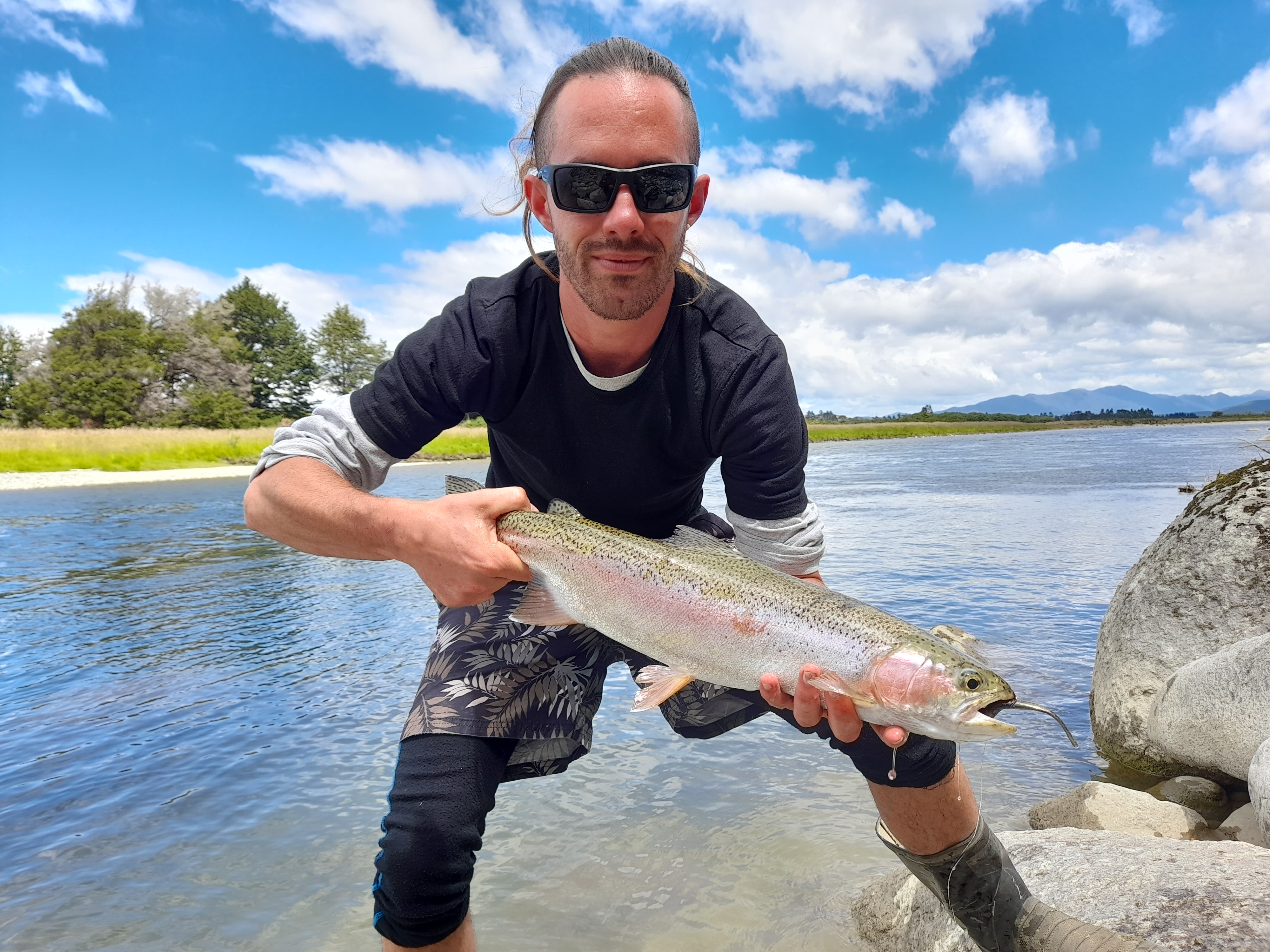Reel Life January 2021
- Southland
- 20/01/2021
- Richie Cosgrove

Where do trout live?
The answer to this question is fairly obvious... in the river!
However, trout are not uniformly distributed throughout the river and will tend to congregate in certain areas and around particular river features.
If you can focus your angling attention on these areas, you will increase your efficiency and up your catch rate.
So, where are the best places to target trout?
Here are the things to look out for:
1.) Deep pools and runs – for a trout to feel comfortable he needs one of two things, quick access to water deeper than a meter or easy access to cover (in the form of woody debris, undercut banks etc). When spin fishing, focus most of your effort in the deeper water.
2.) Cover – as touched on above, cover is important to trout. Cover can be provided in the form of undercut banks, woody debris, submerged willow branches or large boulders. These features provide a place for trout to retreat to if required. Make sure you flick out your lure around these river features. Pictured Above:Trout using submerged willow branches as cover.
3.) Weed beds – although it can be frustrating when our lure gets caught up in the weed, weed (macrophyte) beds are trout magnets because they provide a huge source of trout food (invertebrates and small fish). Trout will actively hunt around macrophyte beds so it’s worthwhile casting your lure along the edge of any weed beds you come across.

Deep water and willows – perfect trout habitat!
4.) Willow trees – willow trees are super important for trout. They provide underwater refuge via their roots and branches and a steady food source (willow grubs) during summer months. If a stretch of river has the combination of deep water and willows, there will be trout present.
5.) Backwaters – the braided nature of some Southland rivers (mid-Oreti and Aparima) can create great backwater habitat. Backwaters are ideal trout habitat because they typically have lots of cover, macrophyte beds, willows and provide still water refuge (perfect during high river flows). It’s always worth getting your feet wet to cross the river if there is a backwater on the other side.
Keep an eye out for these river features when you are out trout fishing and I am sure you will find the fish. If you would like more information on ‘reading’ the water, check out the link to this PDF: https://fishandgame.org.nz/assets/Uploads/Reading-water-DLE.pdf
Have a go on the lower Waiau

A nice rainbow caught on a black and gold soft bait at the Rakatu Wetlands access.
The lower Waiau has been fishing well this month and is worth a visit.
There are plenty of nice rainbows about and they can be effectively targeted using a slightly weighted (1/8th oz – 1/6th oz) soft bait, fished deep through the pools and runs.
Natural coloured (black and gold) soft baits seem to be working very well.
It’s also worth noting that there has been some good invertebrate activity on the Waiau.
During a recent trip, I saw a slow moving run bubbling with 0.75-1.25kg rainbows who looked to be taking small emergers – fly anglers take note!
Also noteworthy is that the fresh that went through the Waiau system earlier in the month may well have spurred the movement of salmon into the river.
In most cases, to have a chance of catching a salmon, your lure will need to be fished right on the bottom in deep pools.
Need to know where to go on the lower Waiau? Try these access points:
- The confluence of the Wairaki River
- Through Jericho Farm (via Jericho Road)
- Via the Rakatu Wetlands
- The confluence of Whare Creek.
Tight lines
Cohen Stewart, Southland Fish & Game Officer